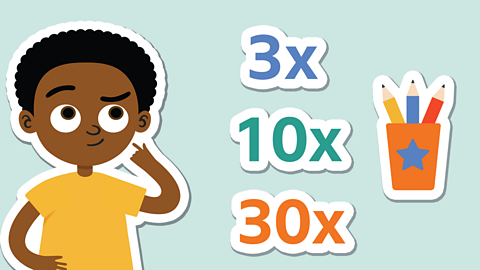How do you multiply a 3-digit number by a 1-digit number?
When you multiply a 3-digit number by a 1-digit number, the best way to do this without a calculator is to use short multiplication.
This is how you would use short multiplication to find out the answer to the calculation 232 × 3.
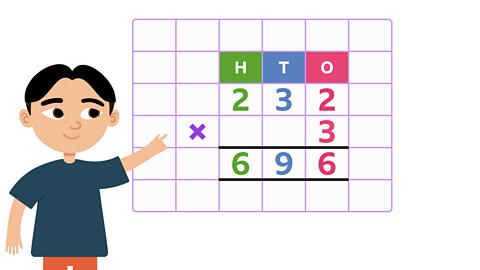
You need to make sure your digits are in the correct columns, so that you multiply the correct numbers.
Your answer goes between the two lines. Make sure you put the digits in the same column as the 3-digit number you are multiplying.
Quiz: Multiplying a 3-digit number by a 1-digit number
Test out your multiplication skills with this quiz, then read on to complete the page.
Using a place value chart to multiply
You can use a place value chart and place value counters to help you multiply a 3-digit number by a 1-digit number.
This place value chart shows 3 groups of the number 254.

This is how you write it as a multiplication sentence:
254 × 3
To find the answer you need to add the value of the columns together.
But first first, you need to exchange between the place value columns.
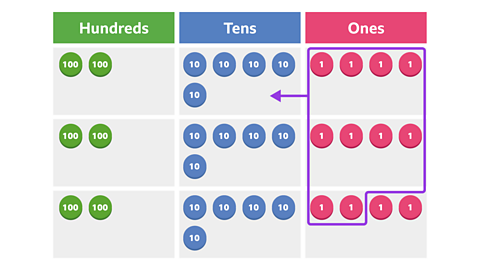
Image caption, There are 12 ones. Exchange 10 ones for 1 ten.

Image caption, There are 16 tens. Exchange 10 tens for 1 hundred.
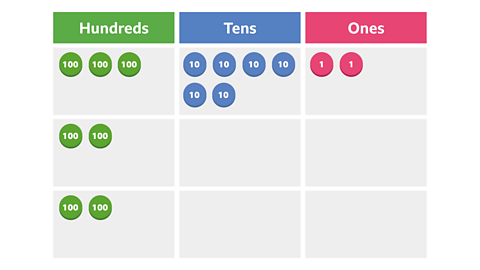
Image caption, Finally, add the numbers of counters in each column.
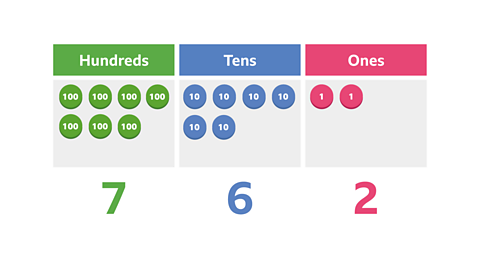
Image caption, This tells you that 254 × 3 = 762.
1 of 4
The short multiplication method
Here is a multiplication sentence:
231 × 3 =
To work out the answer using the short multiplication method you need to write it like this:
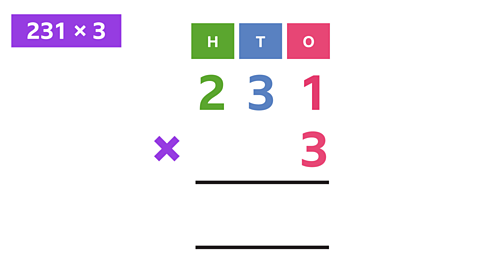
Your answer will go in between the equals sign at the bottom.
You may want to use a place value chart to help with each step of the short multiplication.
Take a look at how to use this method in the slideshow below.

Image caption, Start with the ones column. 1 × 3 = 3.
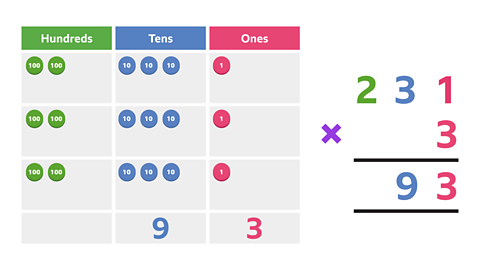
Image caption, Next move on to the tens column. 3 tens × 3 = 90
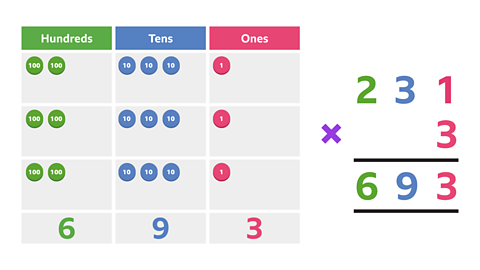
Image caption, Finally, move to the hundreds column. 2 hundreds × 3 is 600. Now you know that: 231 × 3 = 693
1 of 3
Short multiplication and exchanging between place value columns
This is how you carry out a short multiplication when the value in a place value column exceeds 9 and you need to exchange between columns.
The multiplication sentence and the method for working out the answer looks like this:
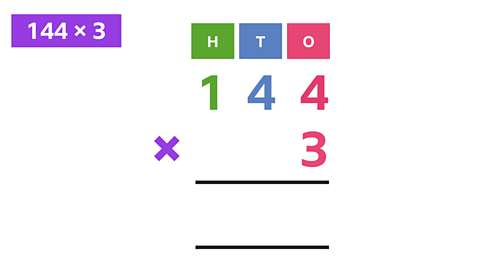
This is a place value table for this calculation.
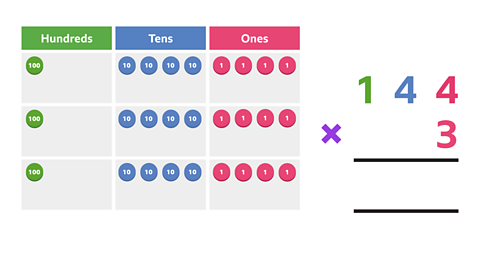
Image caption, Start with the ones column. 4 × 3 = 12. Since 12 is greater than 9, it cannot all stay in the ones column...
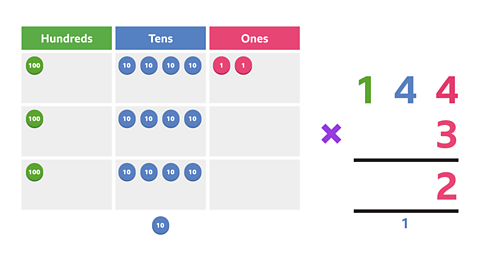
Image caption, You exchange 10 ones for 1 ten and then write the 2 (the remaining ones) in the ones column. The exchanged 1 ten is written as a small digit below the tens column.

Image caption, Next move to the tens column. 4 × 3 = 12. Add the exchanged 1 ten from the previous step, making 13 tens. Since 13 tens is greater than 9, you exchange 10 tens for 1 hundred and write the remaining 3 in the tens column. The exchanged 1 hundred is written as a small digit below the hundreds column.
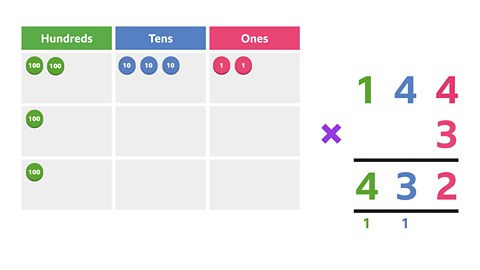
Image caption, Finally, move to the hundreds column. 1 × 3 = 3. Add the exchanged 1 hundred from the previous step, making 4 hundred. Write this total in the hundreds column.
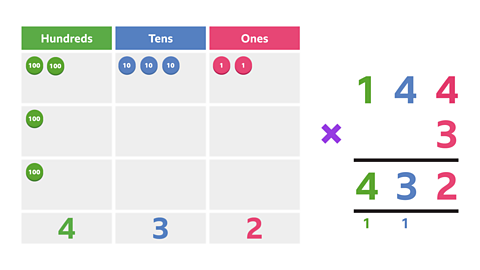
Image caption, Therefore, 144 × 3 = 432
1 of 5
Example 1
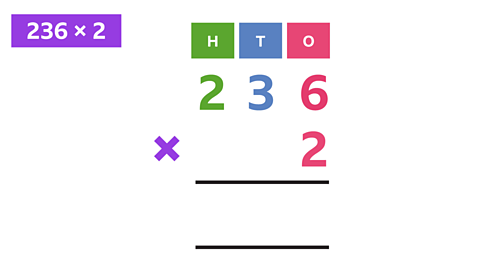
Work out the answer to 236 × 2 using short multiplication.
You could use a place value chart or counters to help.
✓ The answer is 472.
Did you remember to add your exchanged ten?
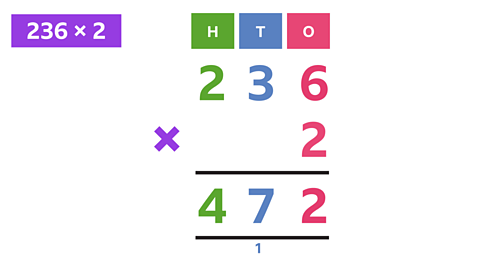
Play Guardians: Defenders of Mathematica to get ready for SATs. gamePlay Guardians: Defenders of Mathematica to get ready for SATs.
In this game, use the times tables and more maths skills to defeat monsters and reclaim the Kingdom.

More on Multiplying and dividing
Find out more by working through a topic
- count20 of 34
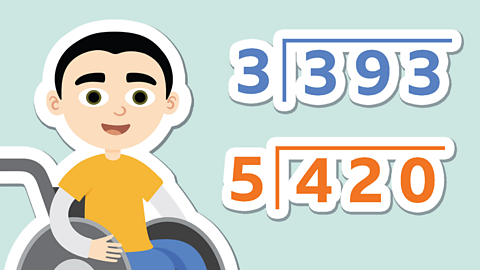
- count21 of 34

- count22 of 34
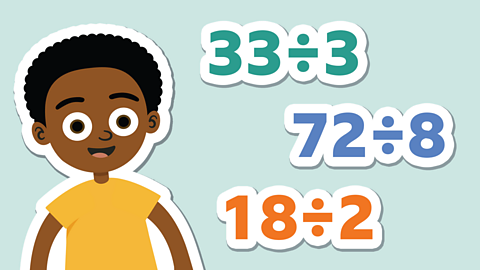
- count23 of 34
